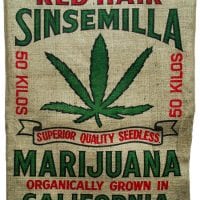UPDATE 11/13 – CNN: Opioid commission’s anti-marijuana argument stirs anger
 November 2 – The US Opioid Commission has jettisoned the voluminous research showing that cannabis serves as an exit drug to opioid use, in favor of a study looking at 12-year-old data.
November 2 – The US Opioid Commission has jettisoned the voluminous research showing that cannabis serves as an exit drug to opioid use, in favor of a study looking at 12-year-old data.
New Jersey Governor Chris Christie wrote in a letter from the Commission to President Trump: “The Commission acknowledges that there is an active movement to promote the use of marijuana as an alternative medication for chronic pain and as a treatment for opioid addiction. Recent research out of the NIH’s National Institute on Drug Abuse found that marijuana use led to a 2 ½ times greater chance that the marijuana user would become an opioid user and abuser. The Commission found this very disturbing.”
The cited study looked at participants who admitted to marijuana use between 2001-2002, and judged their misuse of street or prescription opiates in 2004-2005, via the National Epidemiologic Survey on Alcohol and Related Conditions (NESARC).
The study’s lead author Dr. Mark Olfson wrote to Cal NORML, “These are the only years in which the longitudinal surveys were collected. I, too, wish we had more recent data.”
The researchers noted that, “the great majority of adults who used cannabis did not go on to initiate or increase their nonmedical opioid use” and cited these limitations to their study (among others):
• information on cannabis and opioid use was based on self-report and was not confirmed with urine toxicology, which may have led to underestimates
• the data were collected over a decade ago, and the social context of cannabis use may have changed during this period
• we were unable to distinguish recreational from medical marijuana use
• some of the associations are based on a small number of individuals and should therefore be interpreted with appropriate caution
 Cal NORML is conducting a survey of medical marijuana patients in California and many are reporting that they must increase their use of prescription drugs when they are unable to use cannabis. One said they had to double their opioid dose; others went back on Norco, Oxycontin, Vicodin or large doses of NSAIDS (e.g. 600 mg ibuprofen). Anxiety and sleep meds (Klonopin, Prozac, Seroquel) were also mentioned.
Cal NORML is conducting a survey of medical marijuana patients in California and many are reporting that they must increase their use of prescription drugs when they are unable to use cannabis. One said they had to double their opioid dose; others went back on Norco, Oxycontin, Vicodin or large doses of NSAIDS (e.g. 600 mg ibuprofen). Anxiety and sleep meds (Klonopin, Prozac, Seroquel) were also mentioned.
One of the authors of the study cited by Christie, Dr. Carlos Blanco, owns stock in Eli Lilly, the manufacturer of Prozac. He leads NIDA’s Division of Epidemiology, Services, and Prevention Research at NIH.
Cal NORML’s director Dale Gieringer published the first paper to report that chronic pain was a leading indication for medical cannabis. That was in 2003, based on a survey of 2,500 of Dr. Tod Mikuriya’s patients: “Medical Use of Cannabis: Experience in California,” published in the revised edition of Grotenhermen and Russo, Cannabis and Cannabinoids.
Dr. Gieringer wrote a patient population report in May 2002 for the Journal of Cannabis Therapeutics. At that point, here were the number of medical patients in various states where it was legal:
Oregon – 2,695 = 0.079% of the population
Alaska – 170 = .027%
California – 25,000-35.000 = .08-.09%
Washington – 2,300+ =.02%
Colorado (2001 data) 138 = .003%
Nevada 161 = .008%
Hawaii 300 = .025%
Since then, medical usage has soared by a magnitude of 30 or more. The efficacy of medical cannabis for pain was barely known in 2001-2 outside of a tiny circle of doctors like Dr Mikuriya; much less known was its utility as an opioid substitute.
So, rather than studying patients using marijuana for medicine, the study Christie cited looked at a population willing to use an illegal drug, and moreover, admit to it (with no laboratory confirmation).
The study’s authors noted that, “the great majority of adults who used cannabis did not go on to initiate or increase their nonmedical opioid use” and somehow adjusted for the fact that:
At wave 1, individuals with any past-year cannabis use were younger on average than those without cannabis use, more likely to be male, and more likely to have past-year opioid use disorder, cannabis use disorder, other substance use disorders, or any past-year mood or anxiety disorder. They were also significantly more likely to have a family history of alcohol use disorders, drug use disorders, depression, and antisocial personality disorder.
Since a court ruled New Jersey must take a closer look at marijuana’s health benefits, it seems Gov. Christie will be forced to take a closer look at this topic.
Also see: Trump’s Commission Denies Evidence That Cannabis Can Mitigate Opioid Abuse

